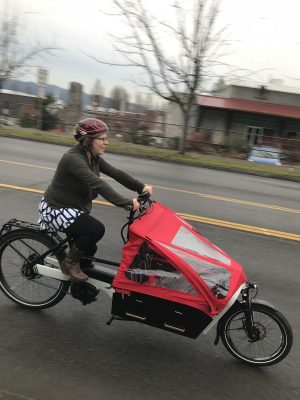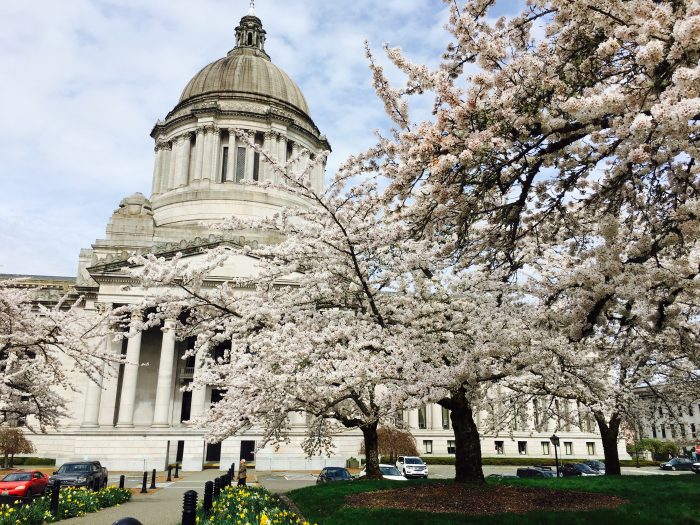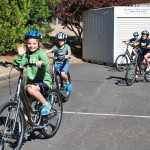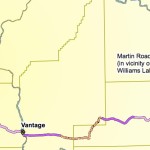The 2018 legislative agenda works to improve bicycling statewide.
In 2017 Washington Bikes worked to pass bills to form the Cooper Jones Bicyclist Safety Advisory Council safety legislation, curb distracted driving, and also advocated for valuable investments to build the Wilburton Trestle and protect valuable multimodal transportation dollars.
Those solid achievements didn’t come easy as the legislature went through not one, but three special overtime sessions. All the way through the third special session, Washington Bikes staff, lobbyists, and supporters continued to monitor and work to represent people who bicycle or want to bicycle in Olympia for a record-setting 193 days. The Washington Bikes 2018 legislative agenda builds on 2017’s momentum in the short session of the two-year biennium.
Washington Bikes’ 2018 Legislative Agenda
Washington Bikes Board of Directors and staff set a 2018 legislative agenda to address the changing nature of bicycling (especially as electric bicycle use grows statewide), protect critical multimodal investments, better understand the economic and health benefits of bicycling, and continue to expand bicycle networks  statewide and to protect trails.
statewide and to protect trails.
Updating Washington’s electric-assist bicycle laws to national standards. The usage of electric-assist bicycles (e-bikes) is booming. They serve as a way to “flatten hills” across our hilly and mountainous state, and allow many who feel intimidated by biking a new opportunity to experience the freedom of two (or three) wheels. Rapid innovation in the e-bike industry has led to greater adoption and more e-bikes on streets and trails. Existing Washington state laws pertaining to e-bikes are outdated and fail to address all types of e-bikes currently on the market, as well as where they can go. The proposed legislation updates the classification system to give Washington state new tools to effectively enforce and manage e-bikes.
The e-bike industry endorses this framework and these national standards, which if enacted, will allow consistency in the Washington state market to laws now-adopted in states like Arkansas, California, Colorado, Tennessee, and others. Already state legislators are hearing from constituent e-bike riders who want clarity regarding where they are able to ride. Finally, the health benefits of e-bicycling are comparable to a brisk walk or low-intensity jog. E-biking for transportation and recreation results in stronger heart rates, lower blood sugar and body fat.1
- Ask: Legislation to update electric-assist bicycle regulation, which will create a framework consistent with national standards. It will provide clear expectations for manufacturers, retailers and consumers in Washington state.
Protect the multimodal account so all Washingtonians can get around. Washington state is committed to investing in multimodal transportation options solutions beyond single-occupancy vehicles. The multimodal transportation account dedicates transportation funds for rail, ferries, transit, biking and walking, which are multimodal in nature.
These investments include: the bicycle and pedestrian grant program, regional mobility grants and Safe Routes to School programs and projects.
- Defend: limited multimodal dollars must remain dedicated to the purpose of providing transportation choices and solutions and not diverted to solutions for electric single occupancy vehicles.
Measuring the economic impact & health cost savings of biking and hiking in Washington. Bicycle travel and tourism is big business and benefits Washington businesses with $3.1 billion in annual spending. Physical activity is another big benefit of bicycling and its particularly important as the nation addresses its obesity crisis and as our state’s children struggle with getting the recommended amount of daily physical activity.
In a partnership with the Washington Trails Association, Washington Bikes will be seeking funding for a study to be conducted by the Washington State Department of Commerce. The study will quantify the bicycle and hiking tourism industry and the health benefits from these forms of active recreation and transportation. This deeper dive, building on the Governor’s 2015 Taskforce on Outdoor Recreation and Parks (which was co-chaired by then-Washington Bikes Executive Director, Barb Chamberlain), will provide new strategies for health cost savings and grow our state’s economy, particularly in rural areas.
- Ask: $125,000 to conduct the study on the economic and health benefits of hiking and biking for Washington state (Operating budget)
Protecting and connecting trails statewide. Trails form a backbone of many of the biking and walking networks statewide. Key project priorities include the development of the cross-state John Wayne Pioneer Trail, as well as the regional backbone for the East King County trail network, the Eastside Rail Corridor.
- Support: (1) Support of State Park’s and Washington Wildlife and Recreation Program (WWRP) funding asks to protect and further develop the John Wayne Pioneer Trail. (Capital budget)
- Support: (2) Support for investment in the Eastside Rail Corridor (ERC). This regional trail will provide connectivity for transportation and recreation. Specific ask for funding of the Wilburton Trestle in Bellevue, which will create an important connection on the ERC. (Capital budget)
- Support: (3) Support of the full $80 million WWRP investment, including improving outdoor recreation opportunities, trail development and enhancing state parks. (Capital budget)
______________________
1. https://www.ncbi.nlm.nih.gov/pubmed/27299435




